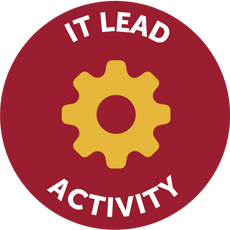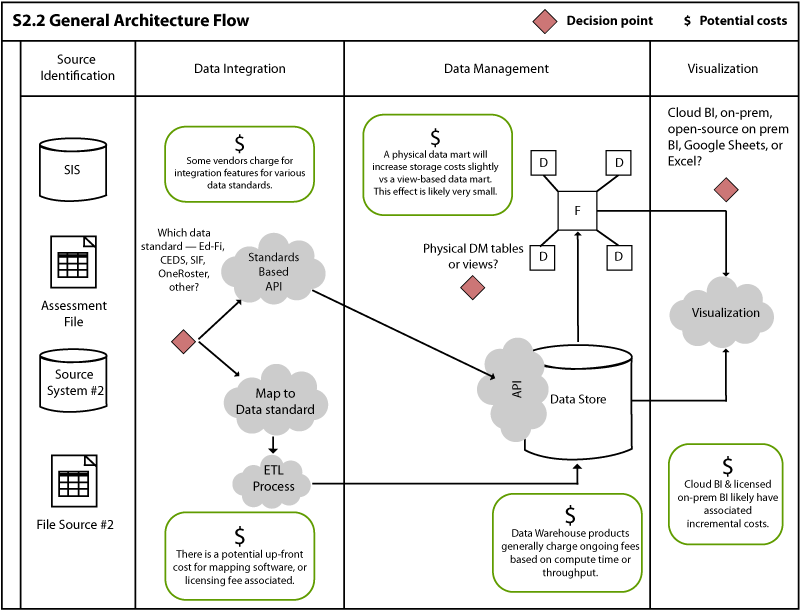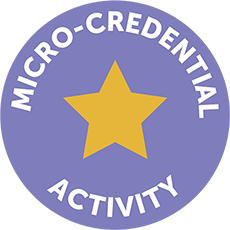Architecture Solution Mapping
Overview
There are many options when it comes to unifying data and systems. In this activity, your district will become familiar with a generalized architecture flow. This will ultimately support you with understanding what technology solutions will be relevant for your district’s existing architecture. Look at the generalized flow below and click on the plus sign buttons to learn more about each phase.

Note:
This activity requires the participation of your district’s IT Lead.
Generalized Flow
Click on the tabs below to learn more about each category.

This phase involves analysis of the source systems that are available to unify and the gaps in data that you need to address to solve your use cases.
This refers to the selection of a data standard to use in the unification of your data and the processes your team will employ to perform transformations and data loads.
How will you store your unified data? This phase requires us to select the data store your district will use to house data.
Now that you have determined how the data will be stored in a common format, it’s time to select a means of visualizing your data. Options can range from a simple Excel spreadsheet to complex dashboards drawing from your data stores.
First, examine the generalized architecture diagram above to familiarize yourself and your team with the flow of a data interoperability project. Then, use the prompts below to begin to develop what your district’s high-level architecture might look like.
IGNITE Questions
- What existing systems that house data that your team will need to solve your use case?
- What additional data sources that may not be housed in a system, such as departmental spreadsheets or other manual methods?
- How will your district procure that data?
- Do you have the internal resources to perform this work?
- Investigate and select a data standard to use in unifying your data. Does the standard cover all the data domains you need to solve your district’s use case? Does the data standard have an active community and/or available support to facilitate smoother system integrations?
- Do your district’s system vendors have standards-based APIs to leverage?
- Will you employ a data warehouse product that you will load directly into?
- Have you considered an operational store with custom data marts?
- Do you already have a visualization tool in your district that personnel are familiar with and trained on? Does that tool meet all of your reporting needs?
- Do you want to look at other tools to determine if they better fit your district’s needs for reporting, analytics, user management, etc.?
- If you opted for a data warehouse product, does it already come with a visualization solution? If so, will it meet your current and future needs?
- Is your district’s aim to produce simple reports that can be delivered via spreadsheets?



With the guidance of your IT lead, locate and use the Architecture Solution Mapping activity in your resource file to map technology options for your district and narrow solution options.